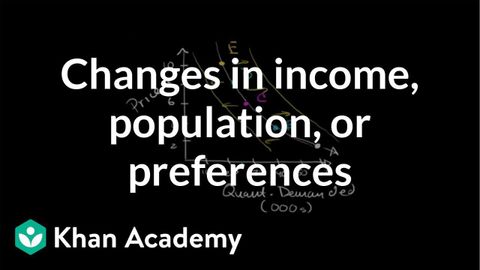收入、人口或偏好的變化 (Changes in Income, Population, or Preferences)
Bravo001 發佈於 2021 年 01 月 14 日  沒有此條件下的單字
沒有此條件下的單字- v.t.裝出;假裝;以為;(想當然地)認為;承擔;就任
US /ˈkɑnstənt/
・
UK /'kɒnstənt/
- n. (c./u.)要點;一小點;斑點;重點;特點;點(字符的大小);時刻;瞬間;地點;意義;得分;削尖;點 (小數點);針腳
- v.i.朝向
- v.t.指向
- v.t./i.表明
- v.t./i.變化,改變;轉移,移動;輪班
- n. (c./u.)轉移;輪班職工;班;輪班;輪班;連衣裙;地殼變動;換檔鍵;換檔
- adj.輪班的

